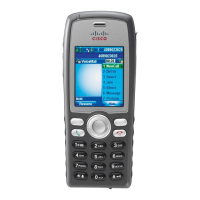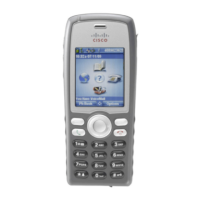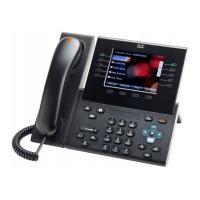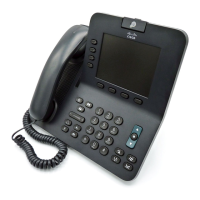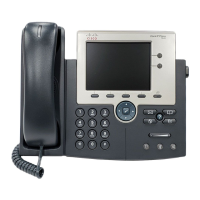2-11
Cisco Unified Wireless IP Phone 7925G Administration Guide for Cisco Unified Communications Manager 7.0(1)
OL-15984-01
Chapter 2 Overview of the VoIP Wireless Network
Components of the VoIP Wireless Network
Related Topics
• Understanding the Phone Startup Process, page 3-17
• Components of the VoIP Wireless Network, page 2-9
• Configuring DHCP Settings, page 5-6
Interacting with Cisco Unified Wireless APs
Wireless IP phones use the same APs as wireless data devices. However, voice traffic over a WLAN
requires different equipment configurations and layouts than a WLAN that is used exclusively for data
traffic. Data transmission can tolerate a higher level of RF noise, packet loss, and channel contention
than voice transmission. Packet loss during voice transmission can cause choppy or broken audio and
make the phone call inaudible.
Wireless IP Phones users are mobile and often roam across a campus or between floors in a building
while connected to a call. In contrast, data users remain in one place or occasionally move to another
location. The ability to roam while maintaining a call is one of the advantages of wireless voice so RF
coverage needs to include stairwells, elevators, quiet corners outside conference rooms, and passage
ways.
To ensure good voice quality and optimal RF signal coverage, you must perform a site survey. The site
survey will determine settings suitable to wireless voice and assist in the design and layout of the
WLAN; for example AP placement, power levels, and channel assignments.
After deploying and using wireless voice, you should continue to perform post installation site surveys.
When you add a group of new users, install more equipment, or stack large amounts of inventory, you
are changing the wireless environment. A post installation survey will verify that the AP coverage is still
adequate for optimal voice communications. See the
“Site Survey Verification” section on page 2-22 for
more information.
TCP Connection-oriented transport
protocol.
Cisco Unified IP Phones use TCP to
connect to Cisco
Unified
Communications Manager
and to access XML services.
TFTP Method for transferring files over the
network.
On the Cisco Unified IP Phone,
TFTP enables you to obtain a
configuration file specific to the
phone type.
You must have a TFTP server in your
network that the DHCP server
automatically identifies. If more than
one TFTP server is running in your
network, you must manually assign a
TFTP server to each phone.
TLS TLS is a standard protocol for
securing and authenticating
communications.
When security is implemented, Cisco
Unified
IP Phones use the TLS
protocol when securely registering
with Cisco Unified
Communications
Manager.
User Datagram Protocol
(UDP)
Connectionless messaging protocol
for delivery of data packets.
Cisco Unified IP Phones receive and
process UDP messages. RTP voice
traffic runs over UDP.
Table 2-4 Supported Networking Protocols (continued)
Networking Protocol Purpose Usage Notes
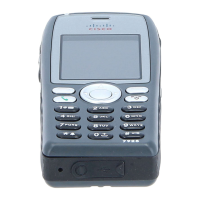
